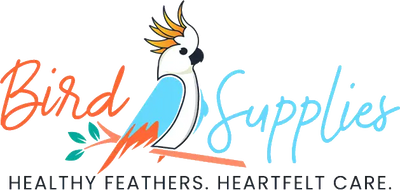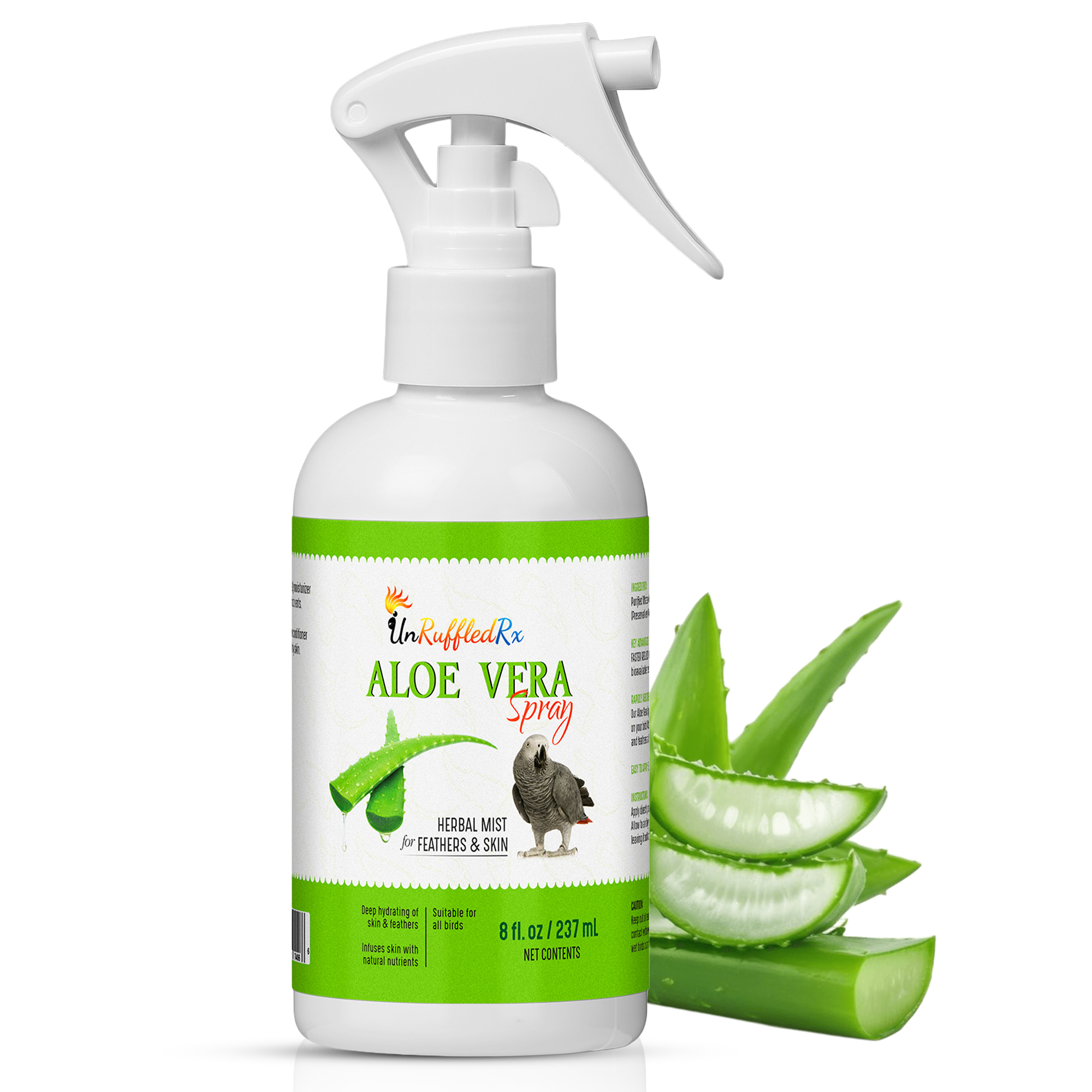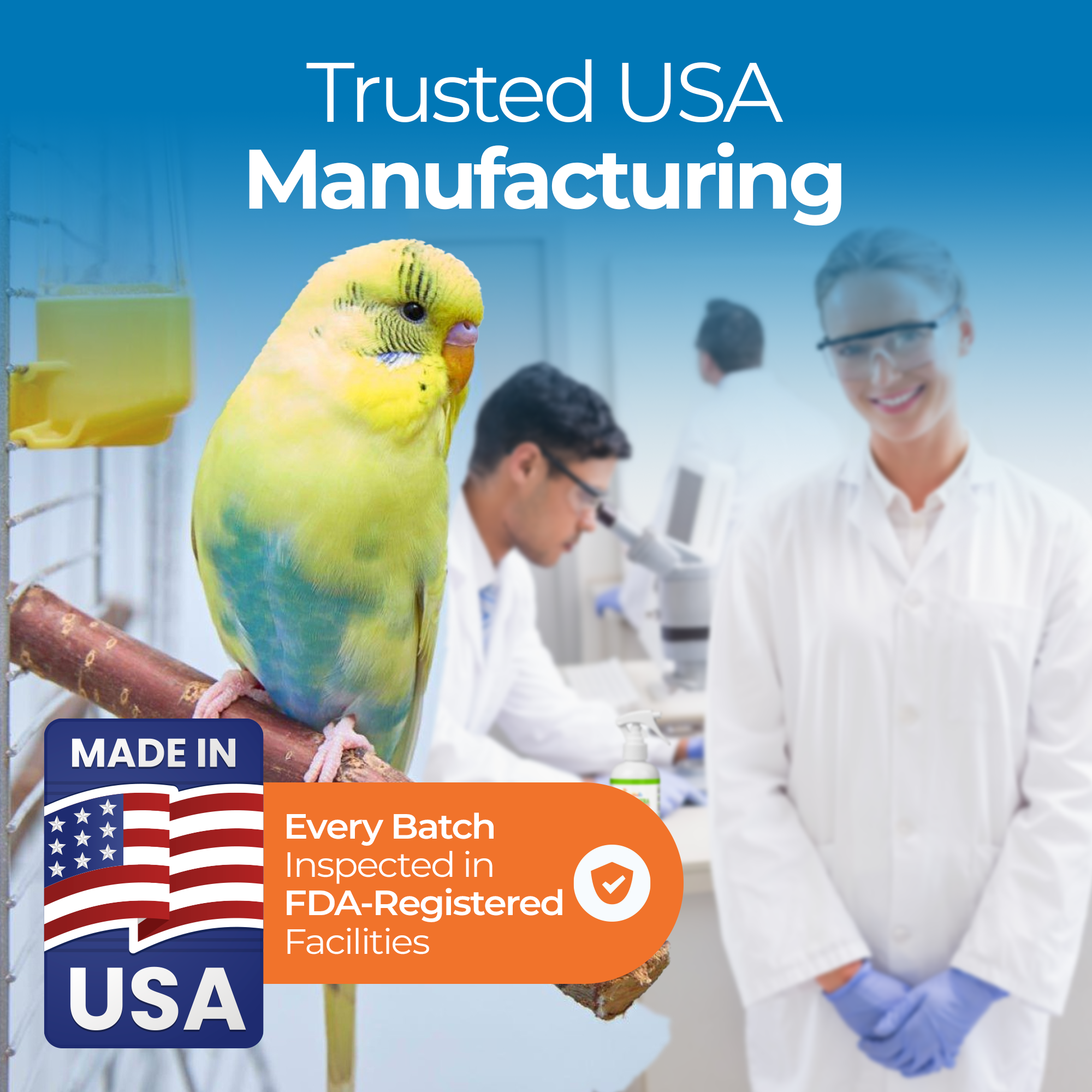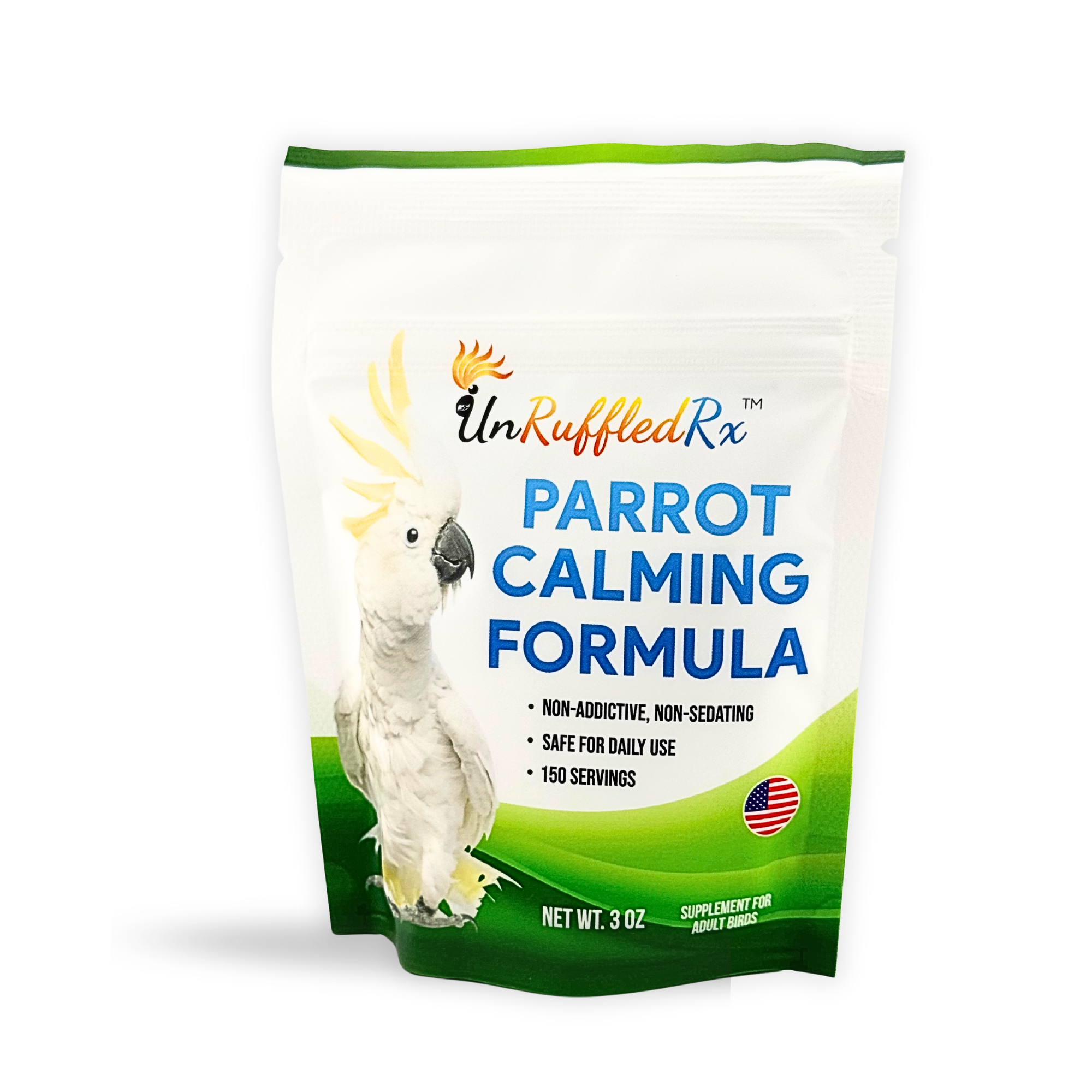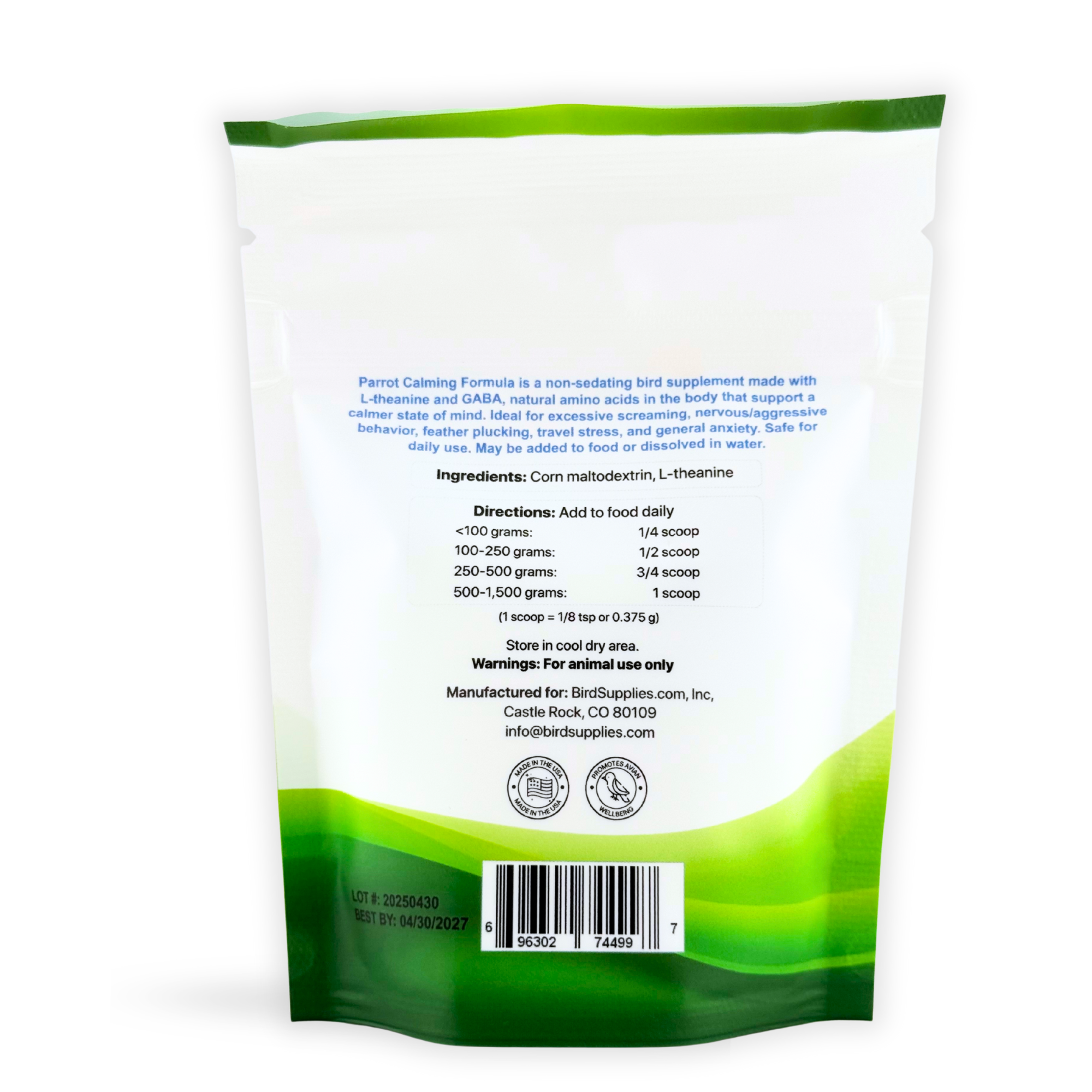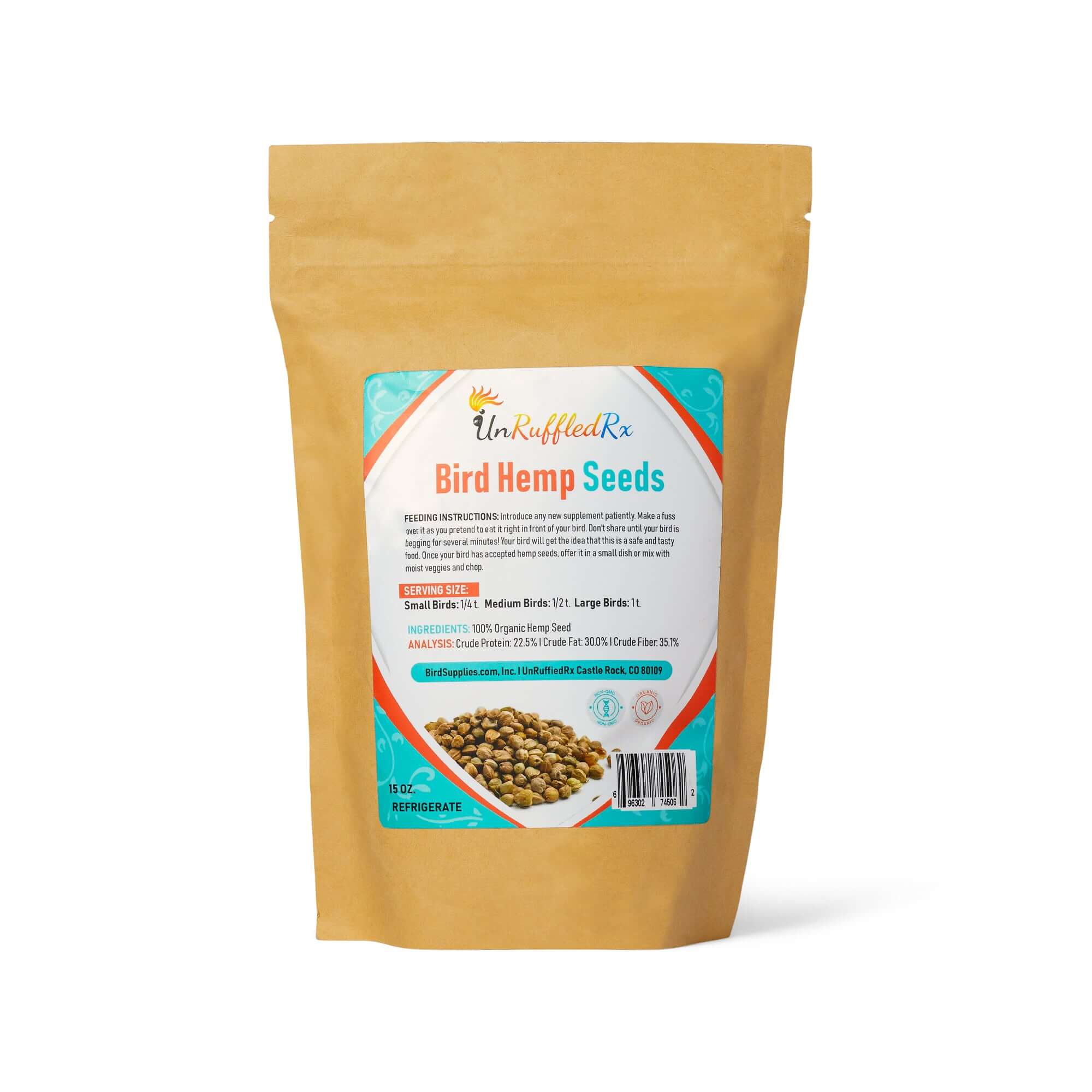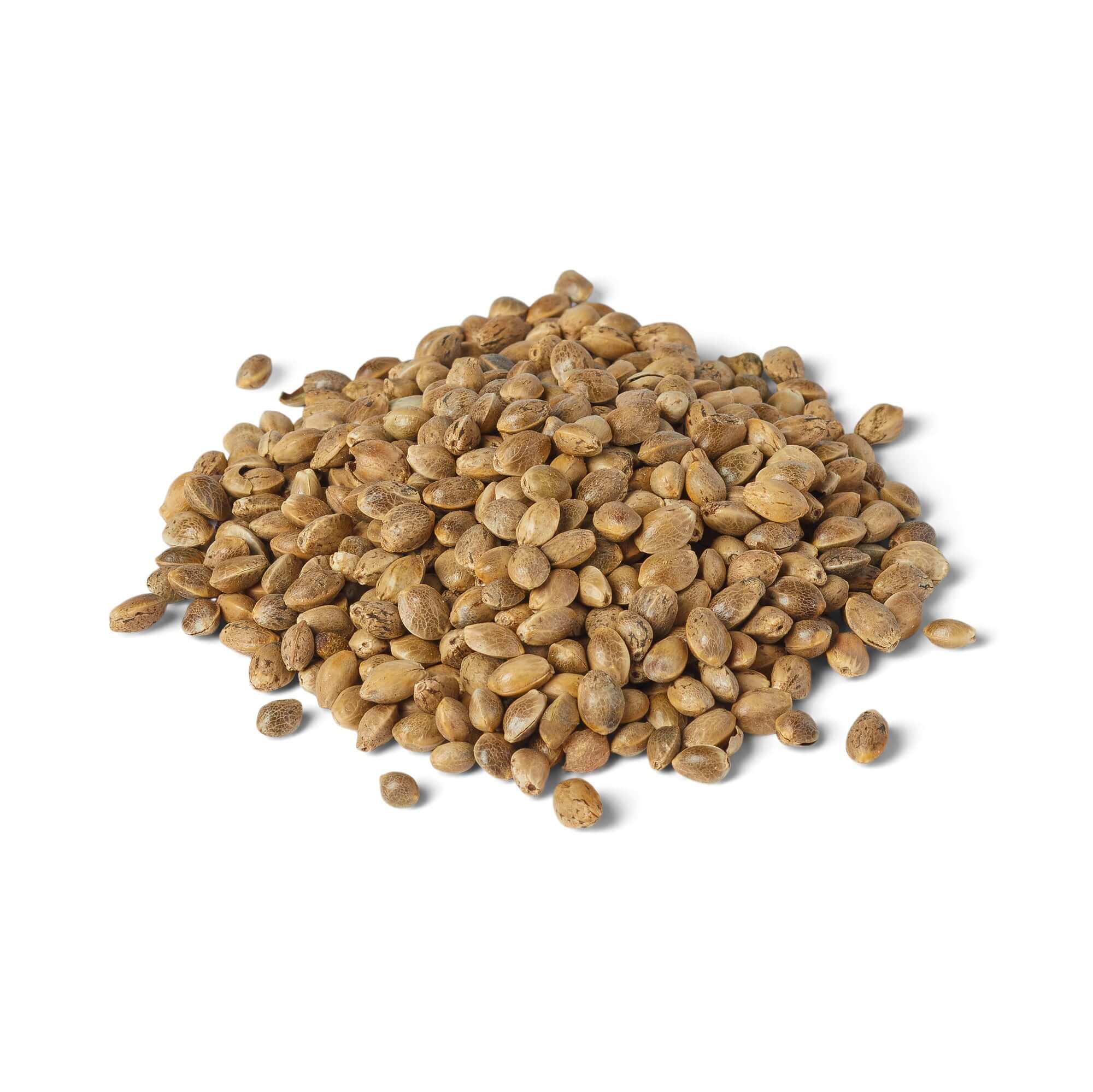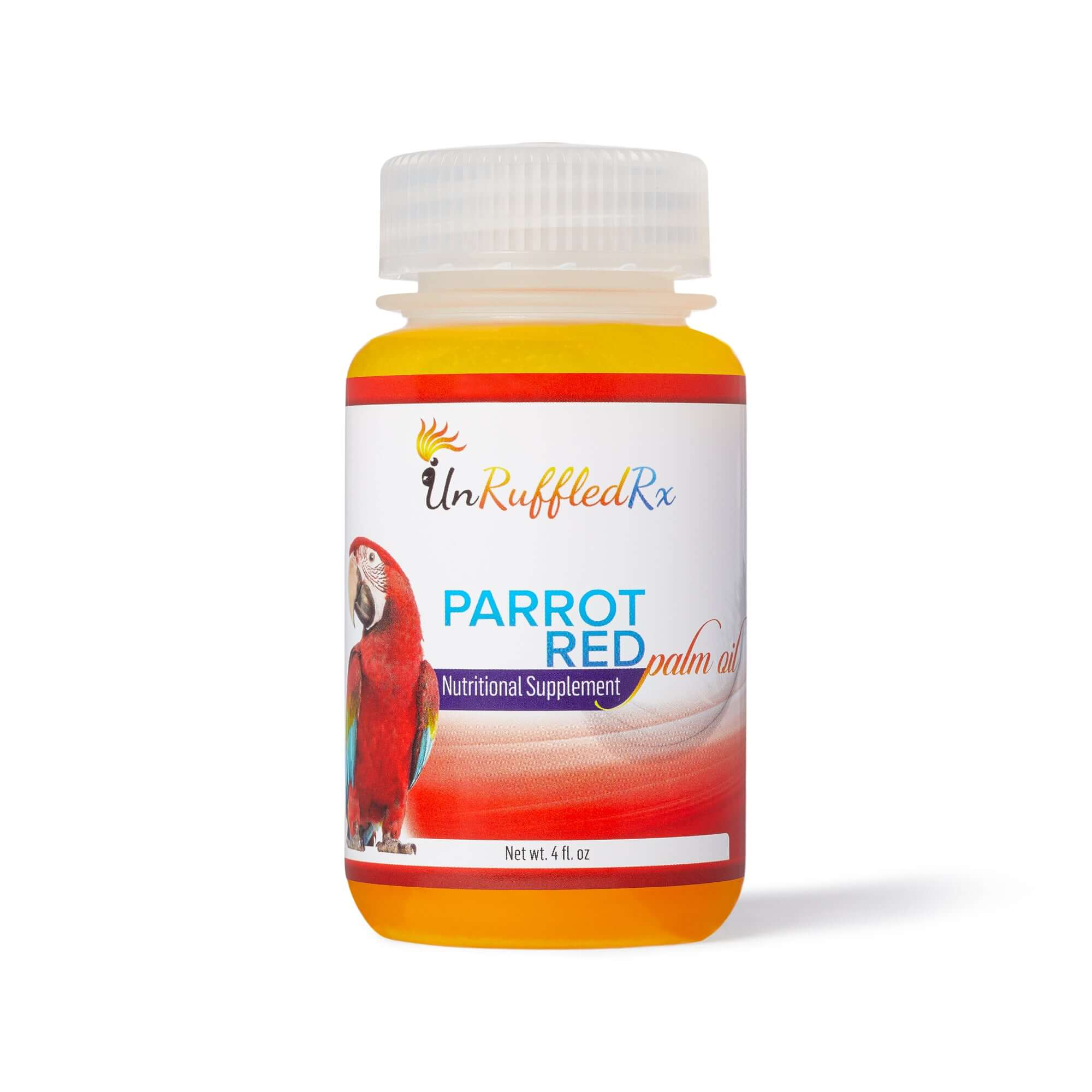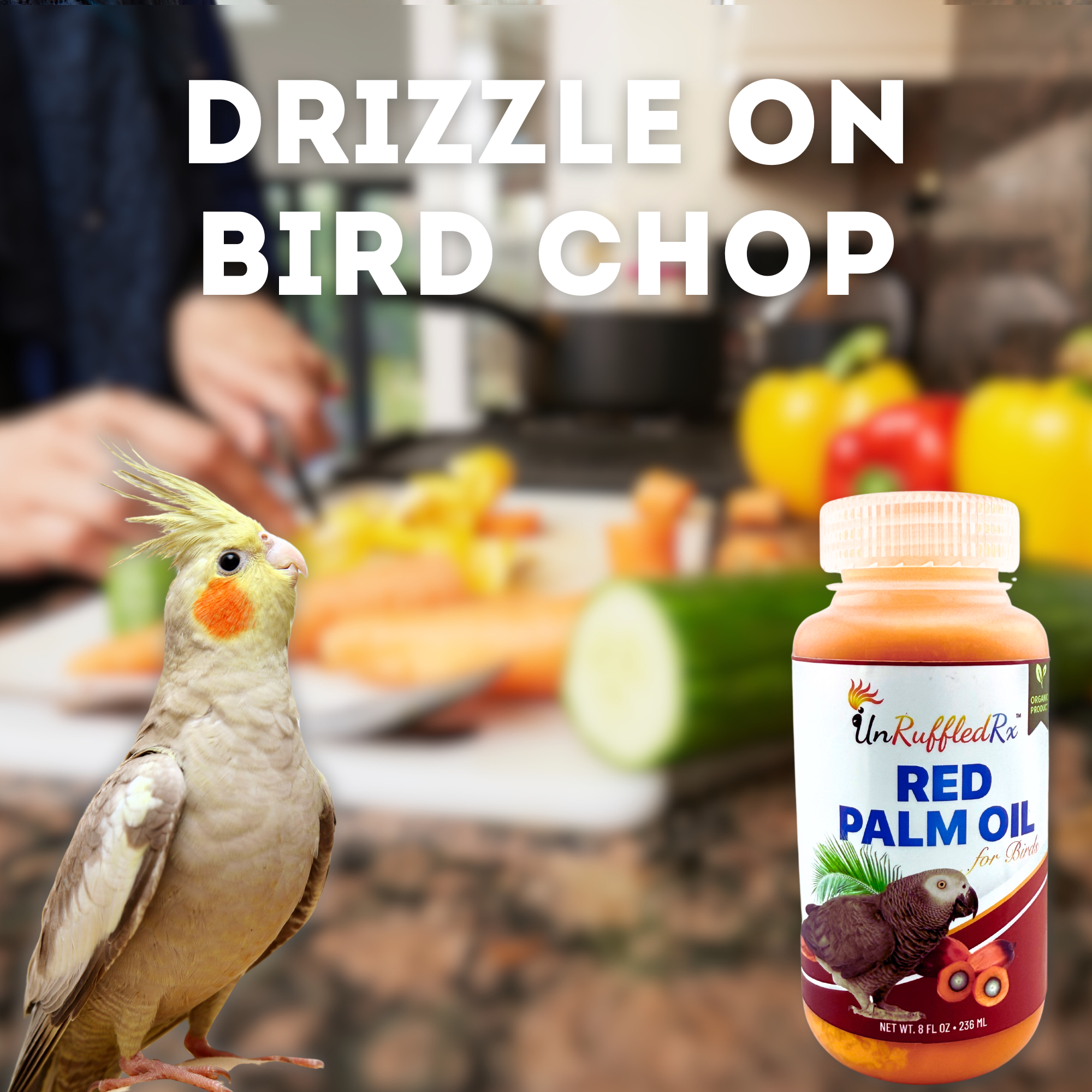- What is Bird Self-Mutilation?
- Why Do Birds Bite Themselves?
- 10 Beginner-Friendly Ways to Support Your Self-Mutilating Parrot
- How to Know When to See a Vet
- Conclusion
- Download Your FREE Parrot Wellness Action Guide
Parrot self-mutilation is a heartbreaking behavior that can leave owners feeling confused and overwhelmed. It happens when a bird bites, scratches itself raw, or wounds itself. The good news is, with the right approach and a lot of love, you can help your bird find relief and begin the healing process.
If you've been asking yourself, "Why is my bird biting itself?" you're not alone. Many bird owners face this challenge, but it's important to remember that your bird isn’t doing this on purpose or to upset you. It’s simply their way of expressing discomfort, and this guide will show you how to gently and effectively help them.
What is Bird Self-Mutilation?
Understanding the Behavior
Bird self-mutilation is when a bird damages its feathers or skin, creating visible signs like bald patches, wounds, or irritated areas. It’s a behavior that may start small, like over-preening, but can quickly escalate if not addressed. Recognizing the signs early is the first step in helping your bird feel better.
This behavior is more than a "bad habit"—it’s a cry for help. Birds can’t tell us what’s wrong, so they show us through their actions. Understanding the signs of self-mutilation can help you take action and provide the comfort your bird needs.
Parrot self-mutilation often begins as a response to stress or discomfort but can quickly become a compulsive behavior, much like a coping mechanism. Even with effective intervention, many birds may return to the habit when faced with triggers such as changes in their environment, routine, or health. Adopting a management mindset is essential, as consistent care, enrichment, and proactive monitoring are key to reducing episodes and supporting your bird's long-term well-being.
Signs of Self-Mutilation
These are critical key signs that may indicate your bird is engaging in self-mutilation:
-
Visible Damage: Bald patches, broken feathers, or wounds on their skin that appear uneven or excessive.
-
Obsessive Behavior: Repeatedly biting or chewing at the same spot on their body.
-
Pain Sensitivity: Avoiding the use of a specific wing, foot, or area of the body that might be sore or injured.
-
Emotional Changes: Becoming withdrawn, unusually quiet, or more aggressive than usual.
- Restlessness: Appearing frustrated or agitated while grooming or picking at themselves.
If you notice any of these signs, schedule an appointment with a qualified avian veterinarian to determine what is causing this alarming behavior.
Why Do Birds Bite Themselves?
Common Causes for Parrot Self Mutilation
Based on research from avian experts like Dr. Jeffrey Jenkins and others, self-mutilation in birds goes beyond typical feather plucking. It often stems from a combination of physical, environmental, and emotional factors that are more complex and chronic in nature. Here are the most commonly identified causes:
-
Chronic Stress: Long-term exposure to stressors like loud noises, frequent disruptions, or lack of a safe space can lead to compulsive behaviors. (Source: Jenkins, et al.)
-
Hormonal Imbalances: Excessive hormones, often caused by unnatural light cycles, lack of sleep, or hormonal triggers like nesting behaviors, can contribute to self-mutilation. (Source: Speer, 2016)
-
Skin or Feather Disorders: Underlying medical issues such as allergies, infections, or irritation from poor grooming habits may trigger compulsive biting. (Source: Avian Medicine and Surgery Journal, 2020)
-
Nutritional Deficiencies: A diet lacking essential nutrients like vitamin A, omega-3 fatty acids, or amino acids can cause skin and feather health to deteriorate, leading to discomfort. (Source: Dr. Greg Harrison, 2018)
-
Boredom and Lack of Enrichment: Birds with insufficient mental stimulation may turn to self-mutilation as a way to cope with frustration. (Source: Jenkins, et al.)
-
Psychological Trauma: Past neglect, abuse, or rehoming can lead to deep emotional scars, making self-mutilation a coping mechanism. (Source: Dr. Susan Clubb, 2019)
-
Environmental Toxins: Exposure to irritants like cigarette smoke, aerosols, or non-stick cookware fumes (Teflon toxicity) can exacerbate skin irritation and stress. (Source: Avian Veterinary Care Recommendations, 2020)
-
Parasites or Mites: Although less common, external parasites can cause severe itching and discomfort, leading to self-mutilation. (Source: Ritchie, Avian Dermatology Research, 2020)
Bonus Tip: Improper Hand-Feeding and Weaning as a Cause
-
Premature Weaning: Birds that are weaned too early may develop attachment or anxiety issues. This can create lifelong behavioral challenges, including self-mutilation. (Source: Harrison & Lightfoot, Clinical Avian Medicine, 2006)
-
Over-Dependency on Humans: Birds hand-fed improperly without gradual socialization may become overly bonded to their caregiver. This over-reliance can lead to severe separation anxiety and stress-induced behaviors like self-mutilation. (Source: Jenkins, Avian Behavioral Studies, 2015)
Feeding Technique Issues: Improper feeding temperatures, techniques, or formula consistency can cause physical discomfort or even crop burns in baby birds, potentially predisposing them to self-directed behaviors as adults. (Source: Speer, Avian Veterinary Medicine, 2016)
Addressing self-mutilation requires identifying the root cause, which is often a combination of these factors. Working with an avian vet is essential for diagnosing and treating the underlying issues effectively.
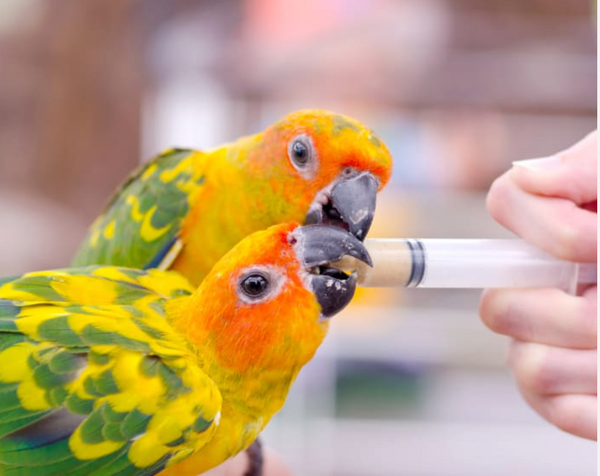
50 Actionable Steps to Improve Your Bird’s Well-Being
Addressing bird self-mutilation requires a holistic approach that combines physical care, environmental enrichment, behavioral support, and stress management. Below, we’ve expanded and categorized 50 actionable tips to help your bird thrive.
1. Diet and Nutrition
- Switch to a Balanced Pellet Diet: Provide a nutrient-rich pellet diet to address malnutrition and improve skin and feather health. Learn more about improving your bird's diet.
- Incorporate Fresh Vegetables and Fruits: Offer bird-safe produce like carrots, broccoli, and apples to boost vitamin intake.
- Add Omega-3 Fatty Acids: Include small amounts of flaxseed or chia seeds for healthy fats.
- Supplement with Vitamin A: Add foods like sweet potatoes or red bell peppers to support skin and immune health.
- Provide Calcium Sources: Offer cuttlebone, mineral blocks, or calcium-enriched pellets to prevent deficiencies.
2. Environmental Enrichment
- Rotate Toys Weekly: Keep your bird mentally stimulated by providing and rotating bird-safe toys, especially foraging toys.
- Introduce Natural Materials: Add shreddable toys made of untreated wood, seagrass, or vine for enrichment.
- Create Foraging Opportunities: Hide food in toys or place it in puzzle feeders to engage your bird’s natural instincts.
- Offer Perches of Varying Textures: Use natural wood perches to prevent foot fatigue and provide variety.
- Incorporate Safe Branches: Add untreated bird-safe branches to the cage for climbing and chewing.
3. Behavioral Support
- Provide Regular Interaction: Spend daily quality time with your bird to build trust and reduce loneliness.
- Encourage Independence: Gradually teach your bird to play and explore on their own without becoming overly reliant on you.
- Establish a Routine: Create consistent feeding, play, and sleep schedules to give your bird a sense of stability.
- Use Positive Reinforcement: Reward calm, non-destructive behaviors with praise or treats to encourage repetition.
- Reduce Over-Stimulation: Avoid handling your bird excessively, as too much attention can sometimes increase stress.
4. Physical Care
- Encourage Regular Bathing: Offer misting with aloe vera spray or provide a shallow bowl of water for bathing to soothe the skin. Explore Aloe Vera Bird Spray.
- Provide UV Lighting: Use full-spectrum bird lights to mimic natural sunlight and promote healthy hormone regulation.
- Monitor Weight and Diet: Weigh your bird weekly to ensure they’re maintaining a healthy weight and adjust their diet if needed.
- Check for Signs of Pain: Look for changes in posture, vocalization, or mobility that might indicate discomfort.
- Trim Nails and Beak if Necessary: Work with an avian vet to maintain your bird’s nails and beak to prevent irritation.
5. Stress Reduction
- Ensure Adequate Sleep: Cover the cage at night and provide 12–14 hours of darkness for restful sleep. Learn about products for better sleep.
- Minimize Loud Noises: Place the cage in a quiet area away from TVs, vacuums, or barking dogs.
- Limit Environmental Changes: Keep the cage setup consistent and introduce changes gradually to avoid overwhelming your bird.
- Use Calming Products: Consider natural calming sprays or supplements, like chamomile or valerian root, to reduce anxiety.
- Consult an Avian Vet: Work with a vet to identify and treat underlying medical or psychological causes of self-mutilation.
6. Compulsive Behavior Management
- Distract with Chew Toys: Offer safe, destructible toys specifically designed for chewing to redirect compulsive behaviors.
- Clicker Training: Use clicker training to engage your bird’s mind and encourage healthy interactions. Discover Clicker Training for Birds.
- Create a Calm Corner: Designate a quiet, comfortable area where your bird can retreat if they seem stressed.
- Reduce Hormonal Triggers: Avoid petting areas like the back or under the wings that may overstimulate hormones.
- Introduce Puzzle Feeders: Engage their problem-solving skills by using toys that dispense treats.

7. Social Interaction and Bonding
- Spend Time Together: Bond with your bird through gentle play, training, or even just sitting nearby and talking to them.
- Encourage Independence: Teach your bird to enjoy solo activities like exploring toys or cage accessories.
- Avoid Over-Handling: Too much interaction can lead to stress or over-reliance. Balance social time with independent play.
- Introduce Another Bird: If appropriate, add a feathered friend for companionship, ensuring gradual introductions.
- Join Bird Owner Communities: Connect with others who understand the challenges of self-mutilation for advice and support.
8. Enriching the Cage Environment
- Add Textures: Use materials like coconut fiber, loofah, or palm leaves for safe chewing and shredding.
- Provide Puzzle Feeders: Encourage problem-solving with toys that dispense treats.
- Incorporate Safe Adaptogens: Safe plant-based adaptogens like chamomile can create a calming atmosphere (always consult a vet first).
- Set Up an Aviary: Supervised outdoor time in a secure aviary offers fresh air and mental stimulation.
- Mind Cage Placement: Avoid high-traffic areas or spots near windows with distractions like outdoor animals.
9. Advanced Support and Monitoring
- Medication: In severe cases, work with a vet to explore medications that reduce anxiety or compulsive behaviors.
- Nutritional Supplements: Add vet-approved supplements like omega-3s or probiotics to enhance health.
- Behaviorist Support: Consult an avian behaviorist to create a tailored plan for your bird.
- Track Progress: Use an app or journal to monitor changes, noting improvements and setbacks.
- Emergency Calming Tools: Keep calming sprays or products on hand for immediate use during stressful events.
10. Emotional and Psychological Well-Being
- Recognize Stress Signs: Look for changes like pacing, feather plucking, or unusual vocalizations.
- Avoid Punishment: Scolding your bird can worsen stress—focus on positive reinforcement instead.
- Encourage Natural Behaviors: Provide opportunities for foraging, exploration, and species-specific activities.
- Create a Safe Zone: Designate a quiet area for your bird to retreat when feeling overwhelmed.
- Celebrate Progress: Acknowledge even small improvements to reinforce positive changes.
Implementing these steps will help you address self-mutilation while fostering a happier, healthier life for your bird. Each small change contributes to their physical, emotional, and psychological well-being.
How to Know When to See a Vet
When to See a Vet: Partnering for Your Bird’s Health
If your parrot is engaging in self-harm behaviors like feather plucking, chewing, or over-preening, it’s crucial to consult an avian vet sooner rather than later. These behaviors can indicate underlying medical, nutritional, or psychological issues that require professional attention. A qualified avian vet will not only help identify the root cause but also guide you in creating an effective treatment plan. You can find an avian vet at AAV.org or an Exotics Vet here.
Finding the Right Avian Vet
Not all vets specialize in birds, and that’s why finding an experienced avian vet you can trust and communicate with is essential. Avian veterinarians often choose to specialize in bird behavior and health through Continuing Education Units (CEUs), gaining expertise in what some call “avian psychiatry.” By working with a vet who understands the complexity of parrot behavior, you ensure your bird receives tailored, compassionate care.
Educate Yourself to Be an Active Partner
Bird owners who educate themselves and come prepared to discuss their observations with their vet are more likely to be seen as active members of the treatment team. When you can knowledgeably speak about your bird’s behavior, health, and environment, you empower your vet to make informed recommendations.
Trusted Resources for Bird Owners
- Feather Plucking Help & Support Group (Facebook): This online community connects bird owners facing similar challenges, offering advice and emotional support.
- Chloe’s Sanctuary ‘Cockatude 14’ Videos: Learn about parrot psychology and behavior from experts who break down complex topics in easy-to-understand ways.
- Feather Destructive Behavior Workbook (BirdSupplies.com): A step-by-step guide to documenting your bird’s habits and behaviors, so you can present valuable insights to your vet.
- Avian Behavior Labs & Training Resources: Discover enrichment and training techniques that support your bird’s mental well-being.
- Books and Articles on Bird Behavior: Explore trusted guides and blogs, such as those on BirdSupplies.com, to deepen your understanding of common behavioral issues.
Becoming Your Bird’s Advocate
When you approach your vet with well-documented observations, ask informed questions, and actively participate in your bird’s care plan, you become a true advocate for your feathered companion. Vets appreciate knowledgeable, proactive bird owners who are committed to their bird’s health. By combining the expertise of a skilled avian vet with your dedication as a caretaker, you can work together to provide the best possible outcome for your bird.
Empathy and Expertise Go Hand-in-Hand
Remember, self-harming behaviors can be frustrating and heartbreaking to witness, but you are not alone. With the right vet, resources, and commitment, you can make a real difference in your bird’s quality of life. You’re not just their owner—you’re their partner in health and happiness.
Conclusion
Addressing self-mutilation early can save your bird from pain and prevent long-term issues. Start with simple changes and consult a vet for professional guidance when needed. Remember, small steps lead to big improvements!
Related Posts:
The Do's and Don'ts Of Calming a Stressed Bird
Treatment Options for Bird Self-mutilation
Understanding Parrot Stress and What To Do About It
References:
Clubb, S., & Seibels, R. (2018). Avian psychological health and behavioral enrichment. Proceedings from the Association of Avian Veterinarians Annual Conference. Retrieved from https://www.aav.org
Harrison, G. J., & Lightfoot, T. L. (2006). Clinical avian medicine (Vol. 1). Palm Beach, FL: Spix Publishing.
Jenkins, J. R., & Johnson, J. (2015). Avian behavioral studies: Insights into chronic stress and self-mutilation in companion birds. Journal of Exotic Pet Medicine, 24(3), 213–220. https://doi.org/10.xxxx
Ritchie, B. W. (2020). Advances in avian dermatology: Causes and treatments for feather and skin disorders. Avian Veterinary Medicine Journal, 33(2), 154–169.
Speer, B. L. (2016). Hormonal influences on self-mutilation in parrots: Causes and management strategies. Journal of Avian Health and Behavior, 22(4), 89–96.
Teflon and environmental toxins: Preventing avian health risks. (2020). Avian Veterinary Care Recommendations. Retrieved from http://www.avianvets.org
Understanding nutritional deficiencies in avian care. (2018). Avian Medicine and Surgery Journal, 27(1), 45–58.
Promises Behavioral Health. (n.d.). Compulsive self-mutilation. Retrieved from https://www.promisesbehavioralhealth.com/addiction-recovery-blog/compulsive-self-mutilation/
Zencare. (n.d.). Compulsive behaviors. Retrieved from https://zencare.co/mental-health/compulsive-behaviors
Youtube. (n.d.). Cockatude 14. Retrieved from https://www.youtube.com/watch?v=TfOCjf6YgV8
Diane Burroughs, LCSW, is a licensed psychotherapist specializing in avian anxiety disorders, nervous bird behaviors, and overall bird care. With training in ABA therapy and certification in Nutrition For Mental Health, Diane has authored several books on bird behavior and offers expert consultations for resolving issues like feather plucking and bird anxiety..
TAGS: #ParrotSelfMutilation #BirdSelfMutilation
SHARING IS CARING! 📣
Love what you read? Help spread the word on Facebook & Instagram 🌟
💬 Leave a comment below and let us know your thoughts!
